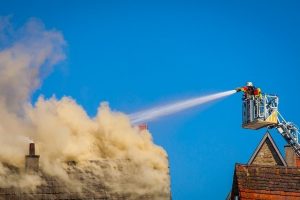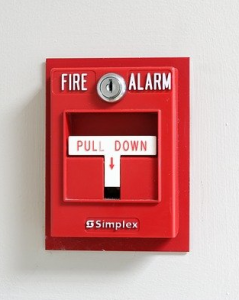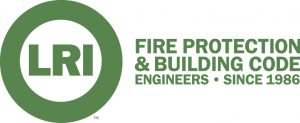Many know the proverb “Where there’s smoke, there’s fire,” but few may realize that smoke is often more deadly than the flames.
“More often than not, it’s not the radiant heat energy or direct involvement of fire that kills people. Instead, it’s the smoke that overcomes them when they’re sleeping or trying to get out,” says Eric Esselink, Chief Executive Officer with LRI Engineering Inc.
That’s not to say fire isn’t a significant threat, but that the impacts of smoke inhalation cannot be understated. Not only can smoke impede a person’s ability to breathe, but it may also contain toxic particles or vapours that affix themselves to the lungs and wreak havoc from within. It’s for these reasons that property managers must make the health and efficiency of their smoke management systems an ongoing priority.
Don’t take your system for granted
 Given everything on a property team’s plate, it’s understandable for smoke management systems to slip under the radar. Nevertheless, ineffective system design, commissioning, installation or documentation can leave building teams and occupants in dangerous situations if unaddressed.
Given everything on a property team’s plate, it’s understandable for smoke management systems to slip under the radar. Nevertheless, ineffective system design, commissioning, installation or documentation can leave building teams and occupants in dangerous situations if unaddressed.
“Though property managers do have an obligation to test and maintain these systems, that’s not always what’s happening,” says Esselink. “Over my own career, I’ve seen a lot of smoke management systems that haven’t really been looked at since they were initially installed, or situations where regular maintenance is being missed.”
It’s also common for system testing to fall short. The initial design and installation of a smoke management system requires input from multiple professionals (e.g., fire safety, mechanical, electrical, architectural, etc.). And while each may verify their part of the puzzle, property managers often lack the documentation or training to test the system as a whole.
“It’s not enough to have various trades signing off on their portion of the system; you need to have your system tested in an integrated fashion to prove that it works the way it’s supposed to,” says Esselink.
Often, he adds, lack of adequate testing is a result of the fact that the fire safety protocol wasn’t developed in a holistic way from the beginning, if at all: “That’s why, when property managers call their fire safety partner to come in and test their systems, they may check all the equipment, but they’re doing it in a compartmentalized fashion. Those specialists are not reviewing how these things are supposed to work together, and they may not even understand how they’re all integrated, because why would they unless there’s some kind of document or protocol to go from?”
Error in the code
 Building upgrades, ownership or management changes and technological retrofits may also put smoke management systems at risk. True, automation and artificial intelligence offer a wealth of advantages for property management, but giving these tools dominion over existing systems opens the doors for both human and technical errors.
Building upgrades, ownership or management changes and technological retrofits may also put smoke management systems at risk. True, automation and artificial intelligence offer a wealth of advantages for property management, but giving these tools dominion over existing systems opens the doors for both human and technical errors.
“It doesn’t take much in the way of programming to get something wrong,” warns Esselink. “For example, if an input/output correlation on a matrix is incorrect, all of a sudden the smoke management sequence doesn’t work the way it should.”
Seemingly harmless decisions may also have negative impacts. In a bid to conserve energy, for example, property teams may program a piece of mechanical equipment to shut down after hours when they assume the office will be empty. The risk of doing this is that people may still be in the building, and that piece of equipment could be a critical part of the smoke management system that won’t kick in if something occurs.
Maintenance oversight
One of the most common reasons smoke management systems fail is they are not well maintained. This can be attributed to property stakeholders who aren’t aware of how the system is supposed to operate, or aren’t testing them in a full, integrated fashion during the mandatory testing.
“It’s important to remember the big picture,” reminds Esselink. “That means making sure your fire safety system will start the fans, release your magnetic door hold-open devices, open and close the dampers, and perform any number of integrated functions when a fire occurs.”
Here again, it’s important to refer back to initial documentation or call upon fire safety engineers who can help test the system holistically and develop the protocols to help property managers tackle their life-saving maintenance responsibilities.
“We realize that smoke management systems don’t always take priority, which is why we’re here to make sure it does what it’s supposed to,” adds Esselink.
Under control
There are many reasons why a smoke management system requires attention. Whether the reason is inadequate commissioning, testing, or maintenance, it’s important to identify and address those gaps. It’s not only a matter of upholding one’s legal liabilities, but ensuring a safer environment for all.
Adds Esselink: “These systems are there for a reason: to save lives. That’s exactly what they’ll do, but only if they’re properly installed and maintained.”
To learn more about LRI Engineering Inc., visit www.lrifire.com.










